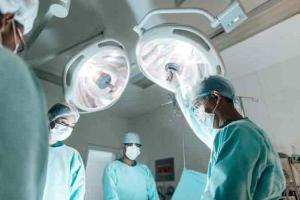Patients see them as bad news and plain dangerous, but doctors view tumours in all their variegated glory, including the recurring, familial ones

Representational picture
 I plugged in the cerebral angiogram films against the white light of the view box and explained the imaging findings to Ryan. Ryan was a handsome, 38-year-old software engineer.
I plugged in the cerebral angiogram films against the white light of the view box and explained the imaging findings to Ryan. Ryan was a handsome, 38-year-old software engineer.
ADVERTISEMENT
He wore rimless glasses, dark washed jeans, and clean dress shoes—a minimalist look that typified his profession. He had recurring headaches that did not seem to get better with 'regular' medication. His family physician had ordered a scan. The brain MRI showed a 5.5 cm tumour arising from the meninges, the protective tissue covering the brain, pressing down on it.
"This, in all probability, is a very vascular meningioma," I said with the modest authority that comes from pattern recognition, after seeing scans every day for a decade.
"Oma," I went on to explain, "means tumour or growth. The word preceding it indicates the source or the cell of origin." In his case, the source was meninges.
A tumour is a collection of abnormal cells in the body. There are a multitude of genetic, molecular and environmental factors that trigger this growth, but we haven't yet been able to fully understand what causes this to occur. The angiogram was additionally performed on Ryan to determine the vascular supply of the tumour and plan a surgical strategy around it; trace the main arterial feeders, tackle those first, and the rest of the operation would be relatively bloodless.
I ran my pointer delineating the tumour blush on the angiogram. "You can see that in this area, the extensive blood supply comes early, stays late, and is very dense. In medical parlance, we call this the mother-in-law sign," I quipped to ease the tension I saw building as he tried to make sense of what was going on inside his head without his knowledge. He broke into a slight smile, flicking the sweat off his forehead with his index finger and thumb.
"So, what do we do about it?"
"Surgery is the only option. We will get the whole thing out, plus, we know the exact grade and aggressiveness of the tumour when we send it for histopathological testing."
"Risks of surgery…?" he interjected.
"Less than one per cent chance of death, paralysis, bleeding, infection…" I continued, with a laundry list that didn't seem to disturb him at all.
"Sometimes, these tumours can return after a few years even if we remove them completely," I added as a word of caution.
"All the more reason to call them mother-in-law tumours!" he quipped, having by now eased into the consultation.
"Would you call this a cancer?" he asked after having processed the information. I'm not sure if he was taking the mother-in-law theme to the next level but I went on to explain that 50 per cent of brain tumours are benign, meaning not cancerous. And the rest are malignant. "I'm pretty certain this belongs to the former category, but whether we need to give you radiation after surgery will depend on how aggressive this tumour is, which we will ascertain once we test it in the lab. Sometimes, even benign tumours need radiating just to ensure they don't become locally invasive. If I had to choose one brain tumour to have, I would choose this one," I said.
A few days later, Ryan was in the operating room, his face the picture of calm and confidence. This positivity of a patient helps the surgeon perform better, I feel. After induction of general anaesthesia, we fixed the head on a clamp, shaving only around the incision site. We went through the routine of cleaning and draping the sterile field, and then opened the skull to reach the main blood supply to the tumour, as planned. Ryan's tumour was removed perfectly. As we controlled the last bit of 'nagging ooze' that we often see after excising tumours like these, I asked my assistant if he knew why these tumours were called mother-in-law tumours. I could see him smile through his mask as I buzzed the final bleeding point dry through the lens of the microscope. "I toh love my mother-in-law," he said out of the blue." She makes my dabba every day."
Ryan made an excellent recovery with a complete resolution of his headache and was discharged within a few days. The post-operative CT scan looked clean. The final report turned out to indicate benign, low-grade meningioma, not requiring any further adjuvant therapy.
"Is there anything I can do to prevent it from returning?" he asked one final time as he got off the bed, thanking me.
"Be nice to your mother-in-law."
The writer is practising neurosurgeon at Wockhardt Hospitals and Honorary Assistant Professor of Neurosurgery at Grant Medical College and Sir JJ Group of Hospitals.
Catch up on all the latest Crime, National, International and Hatke news here. Also download the new mid-day Android and iOS apps to get latest updates
 Subscribe today by clicking the link and stay updated with the latest news!" Click here!
Subscribe today by clicking the link and stay updated with the latest news!" Click here!






